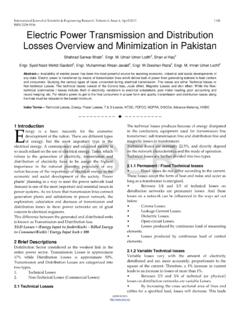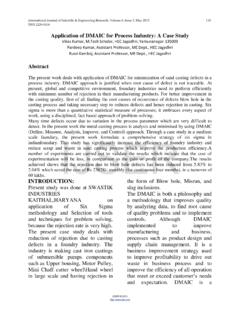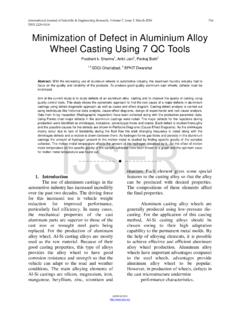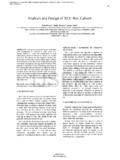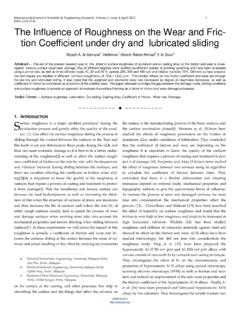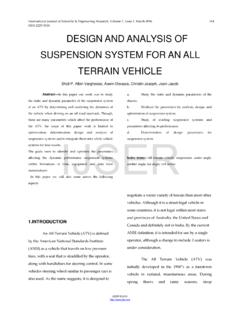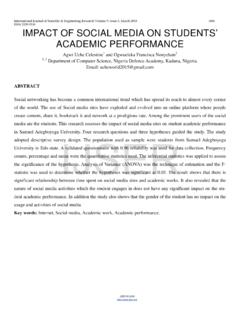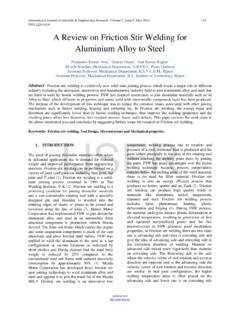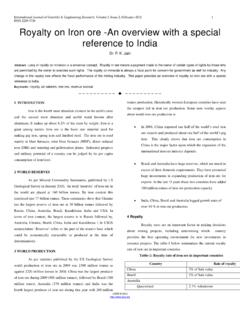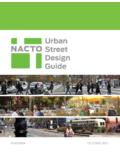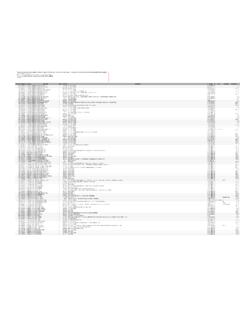Transcription of Urban streets and nodes : A case of Bangalore
1 Urban streets and nodes : A case of Bangalore Ar. Bhaghyalaxmi M Department of Architecture BMS College of Engineering Bangalore , India Ar. Sindhu Srikanth Department of Architecture BMS College of Engineering Bangalore , India Ar. Arjun K S Sekos Architects Bangalore , India Abstract - Urban design has the greatest impact on the city s physical environment and quality of life. It is the three-dimensional combination of forms and spaces as seen in time and over time that defines the character of any Urban area. Public realm consists of those places to which everybody has access, although this access may be controlled at times.
2 This includes outdoor spaces such as streets , squares, nodes , parks. Etc. The city is indeed and will continue to be a collage of parts, some distinctive and others a m lange. What is imperative is that, cities provide a rich set of behavioral opportunities and aesthetic displays that augment the lives of all people who constitute it. Urban streets and nodes being the main links and junctions for movement of motorized traffic, multifold as public spaces by structuring numerous aspects such as mobility of the inhabitants, their interactions as well as conduction of diverse array of activities.
3 Under the impact of rampant urbanization, our streets and nodes are failing to function as public spaces due to several reasons, one of the primary reason being lack of much required attention to micro details with respect to various amenities in the design of street scape navigated by the Urban dweller. In this context, this paper attempts to study, analyze and propose certain design interventions that can be adopted with respect to two public realm spaces( streets and nodes ) addressing different set of user groups, in a commercial and a residential area respectively.
4 Keywords- Urban streets ; node; public space; mobility; livability; streetscape; amenities; Urban modules I. INTRODUCTION Urban design draws together the many strands of public-making, environmental responsibility, social equity and economic viability to sustain Urban life. In summary, Urban design is about creating a vision for an area and the deploying of the skills and resources to realize that vision [1].Most Urban designs deal with Precincts - smaller areas of cities such as Business-Commercial Districts, and new, predominantly residential areas, fringe areas of cities.
5 The multi-fold increase in the economic growth, Urban population and related urbanization are placing high demands on our cities and its infrastructure.. The quality of our communities and lifestyles they support, is an outcome of many factors, including the provision of streets , spacing of dwellings, availability of accessible green spaces, distribution of public open space, essentially the relationship between these [2]. Urban streets , being the basic physical infrastructure fulfill two functions: they serve as spaces for people as well as arteries for motorized and non-motorized traffic.
6 streets encompass more than 70% of public space in our cities and are very much part of the people constituting their surroundings. They are recognized as important axes of economic activities, social interface and cohesion as they balance diverse users. Therefore, the design of an Urban street must reflect and accommodate these assorted functions so that they act as public spaces positively impacting the quality of Urban life. The traditions and habits of residential user group provides a basis for unique design opportunities that can enliven the setting as a whole, while serving specific needs.
7 nodes in residential areas can accentuate the vitality of the area while supporting functional needs of the community. The qualitative aspect of such public spaces in precincts is ensured when it is designed to suite the need and comfort of the user group. In India, at present the street design approach primarily focuses on motorized mobility often ignoring the vibrant and vital socio-economic activities witnessed by the streets . The main scheme followed in the design of our streets and nodes is centerline outwards which includes marking of the median first followed by the construction of carriageway.
8 This approach leaves an undefined outer area. This left over, undefined and often insufficient space is shared by pedestrians, utilities, trees, hawkers and for other Urban activities leading to conflicts for unresolved conflicts of mobility and livability is degenerating the quality of Urban life and the character of pubic spaces. Further, the lack of much required attention to micro details in our streets and nodes with respect to various amenities in the design of street scape navigated by the Urban dweller is aggrevating the situation. This is leading to the non-functioning of our streets and nodes as public spaces.
9 It is in this context, this research paper attempts to study, analyze and propose certain ready-to-build design interventions that can be adopted as Urban inserts. The proposed interventions have been demonstrated through two case studies. Both case studies in this paper- street in a commercial zone and nodes in a residential zone fall under the precinct typology of Urban designInternational Journal of Scientific & Engineering Research, Volume 5, Issue 7, July-2014 ISSN 2229-551863 IJSER 2015 OBJECTIVES AND SELECTION OF CASE STUDIESA. Design Objectives x Appropriateness: The major objective in the design would be to place the street furniture appropriately so as to provide a visual and physical accessibility to the users.
10 X Contextual: To respond to the character and the context physically as well as visually. x Adaptability: Flexible to continually cater to the changing needs of the users, while providing safe Urban environment. B. Selection and analysis of case studies streets abut and criss-cross different land uses and contexts. It is very nature of the streets result in different problems that are contextual to the areas. Therefore the case selected for the study, problem identification, analysis and design interventions have been broadly classified under two contexts: streets in a commercial zone and nodes in a residential zone.
